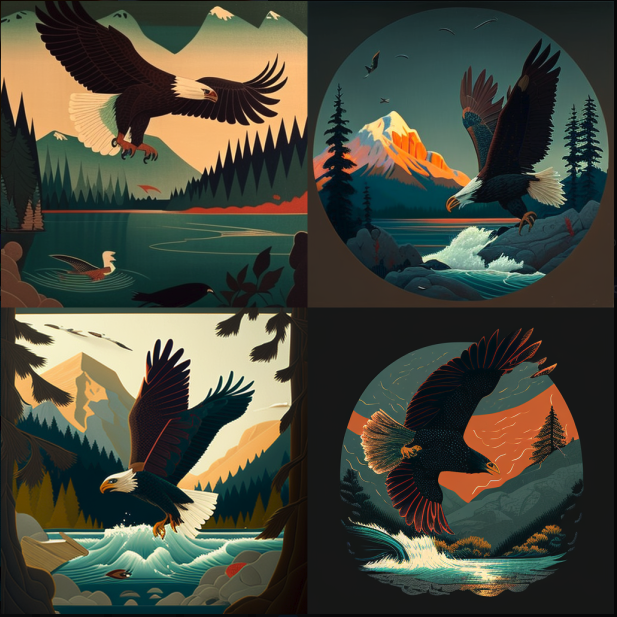🏭 Your process to Write better Prompts
So, you've played around with a few prompts and have gotten kicked in the teeth. Maybe, the model gave you some stupid answers that you found useless. Don't stop yet.
Writing good prompts is hard. Use the following steps to keep moving forward and make progress
Understand your goal
The most important part of getting a good result, is being able to recognize what a good result is. Spend a moment to figure out exactly what you're trying to get.
Once you understand what you're doing, make sure the tools you are using are right for what you're doing. If you want a text that sounds like you, you will have to finetune a model. If you want a photorealistic image, use Stable Diffusion instead of MidJourney.
Be specific and to the point
Specificity is crucial with AI. The information you give the model is all it has to make whatever you want it to. If you ask an image generator for a bird, you'll get a way different image than if you ask for an eagle. and an even better one if you ask for a Bald Eagle catching a salmon by Agnes Lawrence Pelton (granted you want a cool eagle image).
Remember, these models don't understand the physical world. They only learn from 2d images, and lack much of the detail we have about our surroundings.
If you keep your prompt to the point, you will help the model know what to focus on. More detail isn't always better, but adding the right details makes the difference.
How you should format your prompts
The most important information should go first, as english models read from left to right. Use the following format to get a good understanding of how to structure your prompts.
We will use the following example on MidJourney to illustrate what a prompt should look like. While we use an image generator, this works with text generators too.
an environment design with a bald eagle catching a salmon by Agnes Lawrence Pelton.
Content type is the type of answer you want. You can ask models to change formats within the constraints of the platform.
In our example the content type is an environment design
Subject is the main thing or topic of the output.
In our example the subject is a bald eagle
Details are the less important items in the image
In our example the details are catching a salmon
Style is what makes the image distinctive. MidJourney has uploaded the styles of many artists to their model, which adapts the image to fit their style.
In our example the style is by Agnes Lawrence Pelton
Our final result looks like this... Pretty cool!

Retry
Much of writing good prompts is in iterating over the same prompt a few times. This stuff is hard, but keep trying and eventually you'll figure out how to get images that look something like what you want.
Change the order of the words you're using. Some words appear more frequently in the database than others, this means that there is bias towards them. By shifting words you want to emphasize, you change how the model perceives the words as important.
Rephrase Some words have associations you aren't looking for. If you're generating an image, and want a "birds-eye view," you might find yourself with birds in your image. Instead try words like top down.
Repeat Words Repeating words gives them a boost. If you repeat them in a row the boost is bigger. If you put them at the beginning and end of a sentence, the boost won't be as big.
Asking AI for help
Chat GPT is a great tool to reformulate prompts. Be shameless and ask it how it would phrase the prompt
Use tool specific guides
If you're using one of the tools in our Advanced Prompting section, check out the tool specific guides in the Advanced Prompting section to get a better idea of how to write your prompts.